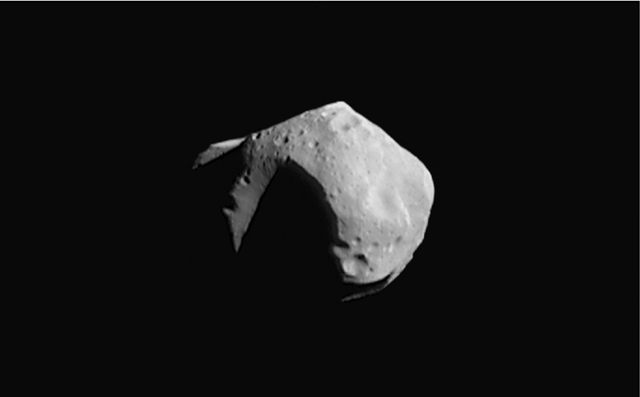
253 Mathilde. Not what is passing by, but a splendid photo of an asteroid! [cf., http://nssdc.gsfc.nasa.gov/imgcat/html/object_page/nea_19970627_mos.html]
This coming week, on 15 February 2013, we will have a unique near-pass by an Asteroid, that of 2012 DA14.
This first link is that of a NASA Press release on the subject:
http://science.nasa.gov/science-news/science-at-nasa/2013/28jan_2012da/
This link is to the NASA Near Earth Orbit Program, giving a bit more information about 2012 DA14:
http://neo.jpl.nasa.gov/news/news174.html
UPDATE: Perhaps it might disrupt communications? http://www.telegraph.co.uk/science/space/9860421/Record-close-asteroid-may-miss-the-Earth-but-it-could-take-out-your-phone.html
This is the entry by Sky and Telescope Magazine on the pass of the asteroid with some excellent charts showing its path across the sky. Sadly, it will not be easily visible from the USA, thought with a magnitude reaching brighter than 7, in the right part of the world you should be able to spot it with binoculars:
http://www.skyandtelescope.com/observing/highlights/Asteroid-DA14-to-Zip-Past-Earth-189052161.html
Here is a video diagraming the NASA press release above:
This site plans to stream the pass of 2012 DA14 -- so if you don't want to brave the cold, or if you have cloudy skies, check in here: http://www.ustream.tv/channel/clay-center-observatory
Of course, Space Weather has a list of asteroids making close passes, along with information on solar activity, including auroras. As you might note here, 2012 DA14 is significantly closer than the other asteroids going by in the next couple of months: http://www.spaceweather.com/
UPDATE: This is a great graphic on 2012 DA14 and comparing it with the meteor that struck Russia: http://news.nationalpost.com/2013/02/15/graphic-the-destruction-radius-if-asteroid-da14-had-hit-toronto-and-other-fun-facts-about-space-rocks-hitting-the-earth/
While we thinking about the sky, you might note the splendid conjunction of Mercury and Mars that we have this very night, 8 February! Where the sky is clear enough, you might try to spot these two planets side by side in the western horizon after sunset: http://www.skyandtelescope.com/observing/home/Mercury-Meets-Mars-189259571.html
Live well!
The Asteroid is a form of combination of Solid material which impact depends upon the speed to collide the place of Earth produced like power of Nuclear bomb to form on the place with light solid materiel as clouds which prevents of entering Sun rays result darkness and fail ere of formation of Natural activities.
ReplyDelete